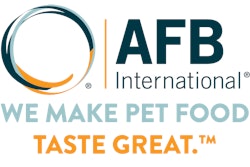If the continuing growth of our industry is driven by trends such as humanization, health and convenience, those trends are manifest in new product development (NPD), which is exploding around the globe.
To delve into this important area, we convened a roundtable at Petfood Forum this past April in Chicago, Illinois, USA. Panelists included:
- Greg Aldrich, PhD, owner of Pet Food & Ingredient Technology Inc. in Topeka, Kansas, USA (and author of " Ingredient Issues ");
- David A. Dzanis, DVM, PhD, DACVN, owner of Dzanis Consulting & Collaborations in Santa Clarita, California, USA (and author of " Petfood Insights ");
- Patrick Moeller, a vice president with AFB International in St. Charles, Missouri, USA; and
- Robert Vigoureux, a consultant with Facta International Business Systems in Belgium.
These experts had many insights and tips, but a few themes stood out.
Blue sky or gut hunch?
Good ideas for new products or services can come from anywhere. Usually the process starts with customers (often via the sales force) and may encompass the supply chain and looking to other industries, such as human food, pharmaceutical and livestock/feed.
Google is famous for encouraging its employees to spend time working on projects that might lead to new products. But it's not just huge Internet companies that foster this type of innovation. Moeller described AFB's approach: "Our technical people have an opportunity to spend a percentage of their time on what we call blue sky' work," he explained. "No targets; they have an idea, think of something, they try it out, demonstrate a proven principle."
Sometimes a less formal NPD process works best, especially in smaller companies, Aldrich said. Some of his customers' best ideas come when the "CEO has a gut hunch, and they get it into the market quickly, give it a test drive and see if consumers embrace it."
Time to shake it up
Thanks to increased consumer and industry focus on safety, our experts believe people are willing to consider big changes now. But developing truly innovative products may take a "disruptive technology," something that requires changes in existing infrastructure - shaking up the status quo.
One example the panelists cited was Mars' WholeMeals product for dogs . It didn't fit under the guise of adding a new ingredient or health claim, as many new products or line extensions do, Aldrich said. Rather, it was based on observing how dogs feed and adapting a product's form and function to that behavior. And, "it's disrupted existing investments in manufacturing capabilities, packaging equipment, logistics software, warehousing and transportation to stores," he added.
The growing number of less processed petfoods - often frozen or refrigerated - also require new ways to transport and display them in stores, as well as new processes such as pasteurization or irradiation. Dzanis described the latter as a "great additional step in ensuring safety from a microbiological standpoint" but acknowledged that consumers and manufacturers might be reluctant to embrace it.
Don't miss the window
Education is often key to how a new technology or product fares in the marketplace. But first it has to get out the plant door. For a successful new product launch, our experts said, you need clear definition of the product, agreement by all involved on the launch timeline and priorities. "Separate what you want from what you need - the must haves' from the nice to haves'," Moeller said. "If those distract you from your needs, you may miss your window."







.png?auto=format%2Ccompress&fit=crop&h=167&q=70&w=250)










